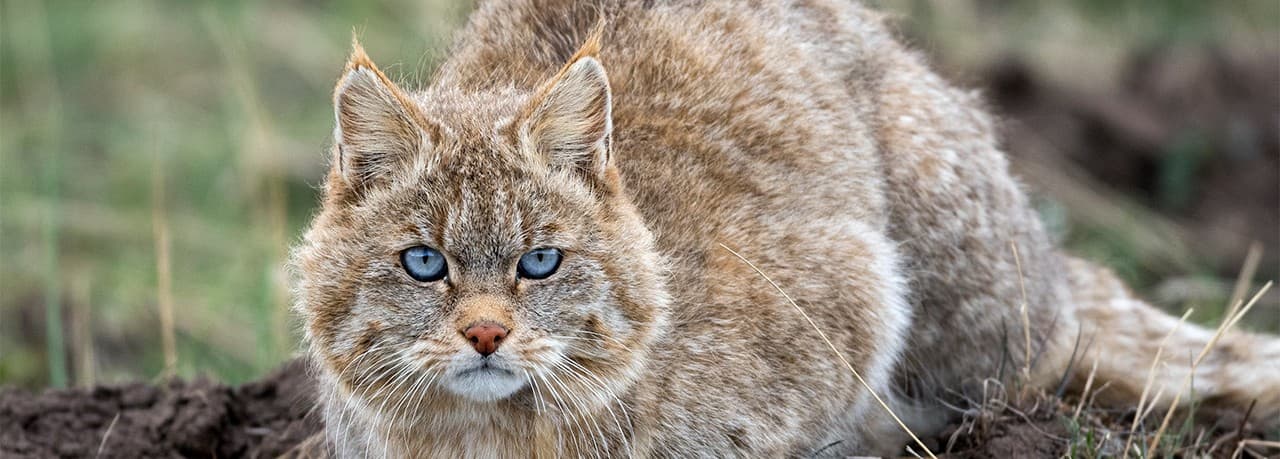The Enigmatic Chinese Mountain Cat: Subspecies or Species?
Ever wondered about Chinese Mountain Cats? They're these awesome cats chilling in the remote parts of China. This new cat species may have given rise to several of today’s modern wildcats and domestic cats. Originally called the “Chinese Desert Cat,” the Chinese Mountain Cat is native to western China. This article is all about what makes them cool and why it's crucial to take care of them.
Let’s start with the basics: are Chinese Mountain Cats a species on their own? A new study that intended to discover whether China alone had domesticated the housecat concluded that the Chinese Mountain Cat may not be a different species.
As David Grimm writes with the reference to Peking University:
“A new genetic analysis of more than two dozen Chinese mountain cats concludes that the creature is not its own species, but rather a subspecies of feline that gave rise to several modern wildcats and the domestic cat.”

Chinese Mountain Cat Traits
Chinese Mountain Cats are relatively small in stature, weighing between 10-20 pounds. This wild mountain cat typically has piercing sky-blue eyes and lacks distinctive markings. Because their habitat is so remote, this elusive species wasn’t even photographed in the wild until 2007.
General Appearance
The Chinese Mountain Cat has a similar appearance to other mountain cat types: small, stubby tails, ears with tufts of fur, and short legs – not to be confused with larger mountain lions like cougars, pumas, panthers, and catamounts, which are much larger and native to the Americas.
Coat and Coloring
The coat and coloring of a Chinese Mountain Cat depend heavily on the season – generally, the color is pale gray in winter and a darker brown in summer, with their backs being moderately darker than the rest of their bodies.
Distinctive Physical Traits
These cats have distinct stripes on the sides and legs, and their ears have small tufts and are the same dark color as their backs. They have a short tail with 5-6 dark grey stripes and a black tip.
Chinese Mountain Cat Temperament
While this cat from China may seem cute and cuddly, these creatures are wild and can be vicious. Because they are such an elusive predator, little is known about these cats that live in the mountains.
Habits and Lifestyle
Chinese cats are solitary creatures. Both males and females dig burrows for homes, with the females’ burrows being much deeper and more secure for rearing young.
Chinese Mountain Cat History
Due to the remoteness of their habitats and a general lack of information about this species, they aren’t kept in North American zoos. Still, this cat is occasionally maintained in Chinese zoos.
Found only in the Tibetan plateau of China, these cats were once called the Chinese Desert Cat, but this name was done away with after it was concluded that the desert is not their natural habitat, and the namesake did not apply.
Based on the above-mentioned study by Peking University, shared in 2021, the Chinese Mountain cat is a subspecies of the Wildcat, Felis silvestris, which is found throughout Europe, Africa, and Western Asia, with the Chinese Mountain Cat, Felis silvestris bieti only found in China.
Chinese Mountain Cat Population
These cats mate from approximately January to March, and females give birth to 2-4 kittens at a time. Kittens reach maturity at about eight months old, when they achieve full independence, leaving their mothers.
Population Threats
It is believed, according to Big Cat Rescue, that the primary threat to Chinese Mountain Cats is the poisoning of their prey base, which also impacts other carnivores in the area.
They are hunted for the local fur trade and are therefore listed as critically endangered according to the National Red List of China’s Vertebrates.
Population Number
Since 2002, fewer than 10,000 breeding adults have remained in the wild, causing them to be considered “vulnerable.” To locals, Pikas are considered pests, so farmers have tried to eliminate them by poisoning them, but Chinese Mountain cats feast on them, often resulting in their demise.
The Chinese government has granted Chinese Mountain cats protected status to help their population rise.
Chinese Mountain Wellbeing
Nutrition
While they are primarily nocturnal, the majority of a Chinese Mountain Cat’s diet consists of rodents and small birds (mole rats, pine voles, pheasants).
Grooming
Cats that live in the mountains don’t necessarily have their own grooming routine. While little is known about these felines, their grooming behavior patterns are thought to resemble that of a domesticated cat.
They have tufts of fur on their ears and between their paw pads and relatively uniformly-colored, thick, long-haired coats that protect them from the various types of weather.
There is still much unknown about the Chinese cat. It is still an endangered species, however, and despite its categorization, many are concerned about the extinction of this small wild feline.
Frequently Asked Questions
Why are Chinese mountain cats endangered?
Often hunted for their furs, these cats also struggle to survive because of harmful poisons to their prey.
What is the status of the Chinese mountain cat?
The Chinese Mountain Cat is critically endangered and on the National Red List of China’s Vertebrates.
Where do Chinese mountain cats live?
The Chinese Mountain Cat is found exclusively in the northeastern Tibetan Plateau in China.



